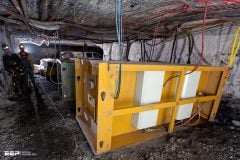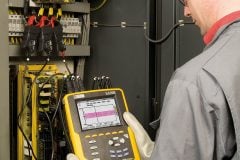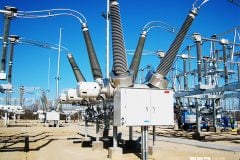
Very high voltages //
A direct stroke is defined as a lightning stroke when it hits a shield wire, a tower, or a phase conductor. An insulator string is stressed by very high voltages caused by a direct stroke. An insulator string can also be stressed by high transient voltages when a lightning stroke hits the nearby ground.
An indirect stroke is illustrated in Figure 1 below.
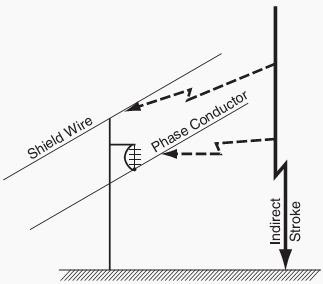
Voltage Components
The voltage induced on a line by an indirect lightning stroke has four components:
1. The charged cloud above the line induces bound charges on the line while the line itself is held electrostatically at ground potential by the neutrals of connected transformers and by leakage over the insulators. When the cloud is partially or fully discharged, these bound charges are released and travel in both directions on the line giving rise to the traveling voltage and current waves.
2. The charges lowered by the stepped leader further induce charges on the line. When the stepped leader is neutralized by the return stroke, the bound charges on the line are released and thus produce traveling waves similar to that caused by the cloud discharge.
3. The residual charges on the upper part of the return stroke induce an electrostatic field in the vicinity of the line and hence an induced voltage on it.
4. The rate of change of current in the return stroke produces a magnetically induced voltage on the line. If the lightning has subsequent strokes, then the subsequent components of the induced voltage will be similar to one or the other of the four components discussed above.
The magnitudes of the voltages induced by the release of the charges bound either by the cloud or by the stepped leader are small compared with the voltages induced by the return stroke. Therefore, only the electrostatic and the magnetic components induced by the return stroke are considered in the following analysis. The initial computations are performed with the assumption that the charge dis-tribution along the leader stroke is uniform, and that the return-stroke current is rectangular.
However, the result with the rectangular current wave can be transformed to that with currents of any other waveshape by the convolution integral (Duhamel’s theorem).
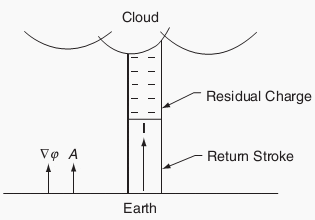
It was also assumed that the stroke is vertical and that the overhead line is lossfree and the earth is perfectly conducting.
The vertical channel of the return stroke is shown in Figure 2, where the upper part consists of a column of residual charge that is neutralized by the rapid upward movement of the return-stroke current in the lower part of the channel.
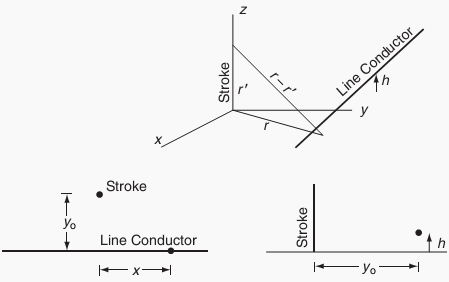
Figure 3 shows a rectangular system of coordinates where the origin of the system is the point where lightning strikes the surface of the earth.
The line conductor is located at a distance yo meters from the origin, having a mean height of hp meters above ground and running along the x-direction. The origin of time ( t ¼ 0) is assumed to be the instant when the return stroke starts at the earth level.
Resource // Pritindra Chowdhuri – Tennessee Technological University

